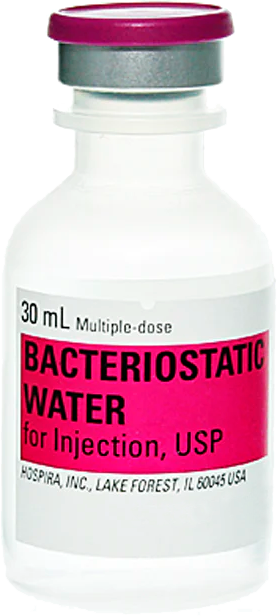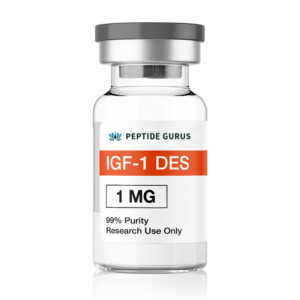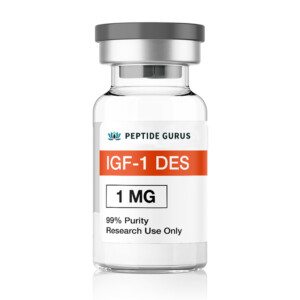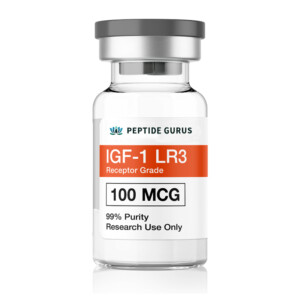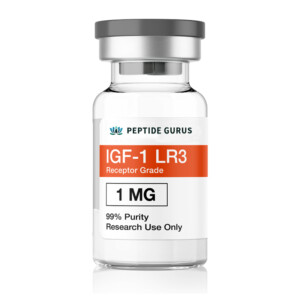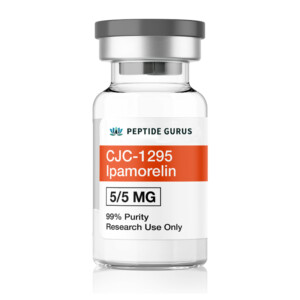Gratis (1) 30 ml de agua bacteriostática
con pedidos calificados sobre $500 Dólar estadounidense.
(excluye productos en cápsulas, péptidos cosméticos, códigos promocionales y envío)
Hexarelin is a synthetic analogue of ghrelin that shows benefit in heart disease and cardiac ischemia, protecting the heart following heart attack. Research has shown that Hexarelin also protects skeletal muscle against wasting and improves cholesterol and triglyceride levels.
Uso del producto: Este PRODUCTO ESTÁ DISEÑADO ÚNICAMENTE COMO QUÍMICO DE INVESTIGACIÓN. Esta designación permite el uso de productos químicos de investigación estrictamente para pruebas in vitro y experimentación de laboratorio únicamente.. Toda la información del producto disponible en este sitio web es solo para fines educativos.. La introducción corporal de cualquier tipo en personas o animales está estrictamente prohibida por la ley.. Este producto sólo debe ser manipulado por personal autorizado., profesionales cualificados. Este producto no es un medicamento., alimento, o cosmético y no puede estar mal etiquetado, mal utilizado o mal etiquetado como droga, comida o cosmética.
What Is Hexarelin?
Hexarelin, also called Examorelin, is a synthetic analogue of ghrelin and is closely related to GHRP-6. De hecho, hexarelin and GHRP-6 differ from each other only slightly thanks the addition of two methyl groups to GHRP-6. Hexarelin, like many ghrelin analogues, is orally and sublingually active and highly selective. Hexarelin has been heavily researched for its effects on heart cell survival following ischemia and nutrient deprivation.
Hexarelin Structure
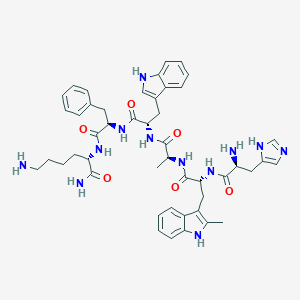
Secuencia: His-D-Trp(2-Me)-Ala-Trp-D-Phe-Lys
Fórmula molecular: C47h58norte12oh6
Peso molecular: 887.059 g/mol
PubChem CID:6918297
Número CAS: 140703-51-1
Hexarelin Effects
1. Protects the Heart
Hexarelin directly affects the heart by binding to the CD36 receptor and the growth hormone secretagogue receptor (GHSR). Studies in mice suggest hexarelin protects heart cells from injury in the setting of heart attack by binding to these receptors and preventing cells from undergoing apoptosis (muerte celular programada). Mice treated with hexarelin in this study showed improved heart function, increased number of surviving heart cells, and decreased production of malondialdehyde (a marker of heart cell death). Curiosamente, GHRP-6 was found to be slightly superior to ghrelin in this study[1], [2].
A study in rats investigating the ability of GHRP-6 to offset problems associated with heart failure found that the peptide reduces oxidative stress in heart failure and prevents myocardial remodeling from taking place. Remodeling is a pathological process associated with a decline in heart function and serious morbidity. Rats treated with GHRP-6 in this study had significant improvements in the function of their heart. These processes are thought to be mediated by GHRP-6 up-regulation of phosphatase and tensin homologue (PTEN) activity as well as down regulation of protein kinase B expression[3]. PTEN plays a role in cell regeneration while protein kinase B regulates cell survival.
GHRP-6 is so effective in reducing cardiac remodeling that it shifts the balance of nervous system activity away from sympathetic stimulation (higher heart rate, higher blood pressure, etc.) toward parasympathetic dominance. This not only improves short-term health and outcomes, but reduces the need for medication over the long term and likely helps to prevent cardiac remodeling that is secondary to increased stress on the heart. Rats treated with GHRP-6 following a heart attack show substantial reductions in the size of the scar left behind[4], [5].
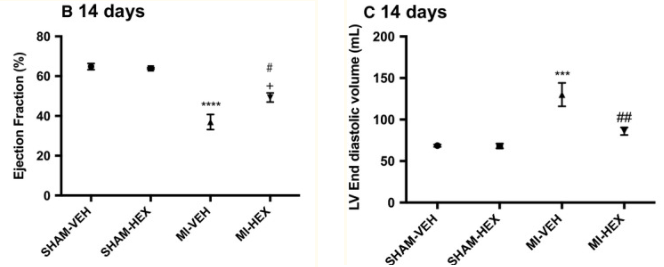
Fuente: PubMed
Because the mechanism by which hexarelin protects heart cells is not specific to the mechanism of damage in heart attack, researchers speculated that the peptide could be used to protect the heart from other insults as well. Investigación, again in rats, found that hexarelin improved cardiac function in a model of diabetes by changing the way calcium and potassium are processed by heart muscle cells[6]–[8].
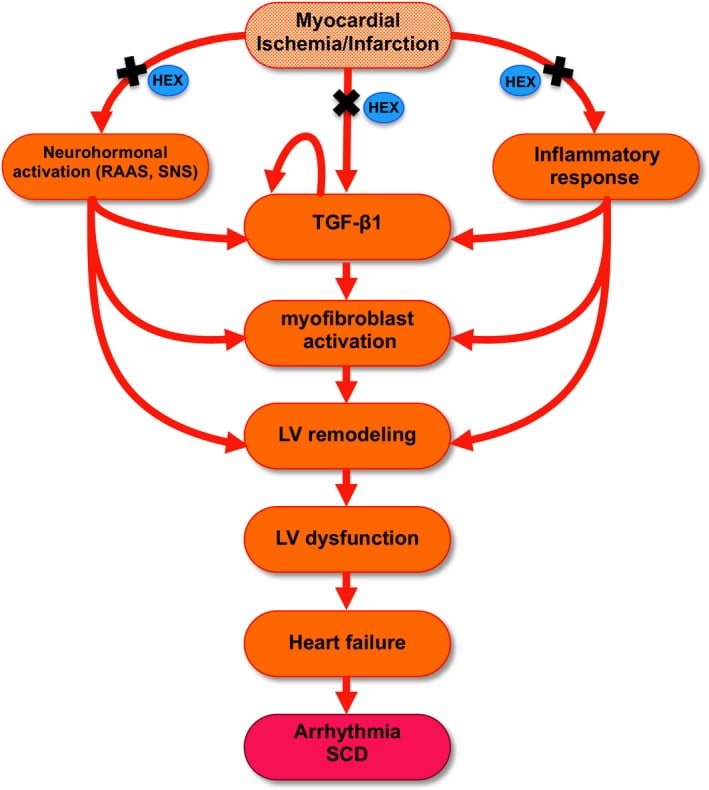
Fuente: PubMed
2. Improves Fat Measures
Dyslipidemia refers to an abnormal amount of fat in the blood. Curiosamente, dyslipidemia is an independent risk factor for the development of diabetes, even in thin and outwardly healthy individuals. De hecho, dyslipidemia may help to explain the current diabetes crisis in first-world nations and understanding its effects on human physiology is paramount to combating the growing health concerns associated with modern diets. Research in rats indicates that GHRP-6 can correct dyslipidemia in the setting of insulin resistance (the first step in the pathway to diabetes) while simultaneously lowering blood sugar and insulin resistance[9]. The peptide may offer an alternative to current lipid medications for the treatment of severe dyslipidemia.
3. Protects Muscle
It isn’t just heart muscle that hexarelin protects. Studies in rat models of cachexia (extreme weight loss due to illness or chemotherapy) indicate that GHRP-6 protects muscle cells by regulating calcium flow as well as mitochondrial dysfunction[10]. Mitochondria are the power plants of cells. Without them, cells cannot produce the energy they need to carry out normal function and will eventually die.
Calcium regulation is often disrupted by chemotherapy. Calcium dysregulation is one of the primary reasons that muscle mass and lean body mass are affected during cancer treatment. Research in rats indicates GHRP-6 offsets the alterations in calcium regulation caused by chemotherapy[11].
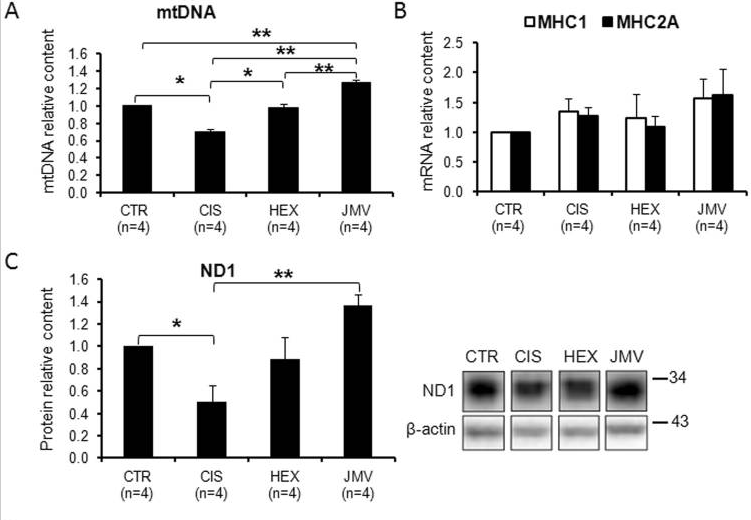
B. Content of MCH1 and MHC2A mRNA
C. Protein content of of muscle cells relative to controlled
Fuente: PubMed
Hexarelin Heavily Researched
Heart disease is the leading cause of death in most developed nations. Understanding the complex process that leads to heart disease, insuficiencia cardiaca, and eventually death is not easy, but scientists are beginning to unravel the mystery with help from peptides like hexarelin. Research utilizing hexarelin has revealed a number of new pathways for understanding the function of the heart in health and disease. It has also opened the door to develop new treatments for problems, like cardiac remodeling, that have proved difficult to treat in the past.
Hexarelin exhibits moderate side effects, baja biodisponibilidad oral y excelente subcutánea en ratones. La dosis por kg en ratones no se aplica a los humanos. Hexarelin for sale at
Autor del artículo
La literatura anterior fue investigada, editado y organizado por el Dr.. logan, MARYLAND. Dr. Logan tiene un doctorado de Facultad de Medicina de la Universidad Case Western Reserve y una licenciatura. en biología molecular.
Autor de revista científica
Aline Moulin’s research while affiliated with French National Centre for Scientific Research and other places are extensive. She is well versed in pharmaceutical development, management, external manufacturing operations, control de calidad, regulatory control, drug delivery, and drug discovery research. She has used Hexarelin in multiple studies to monitor if certain pharmaceuticals were capable of inhibiting many of its effects.
Aline Moulin’s is being referenced as one of the leading scientists involved in the research and development of Hexarelin. De ninguna manera este médico/científico respalda o defiende la compra, venta, o uso de este producto por cualquier motivo. No hay afiliación o relación., implícito o no, entre
Citas referenciadas
- j. Huang, Y. li, j. zhang, Y. Liu, and Q. Lu, “The Growth Hormone Secretagogue Hexarelin Protects Rat Cardiomyocytes From in vivo Ischemia/Reperfusion Injury Through Interleukin-1 Signaling Pathway," En t. Heart. J., volumen. 58, No. 2, páginas. 257–263, Abr. 2017. [PubMed]
- Y. Mao et al., “Hexarelin treatment in male ghrelin knockout mice after myocardial infarction,” Endocrinología, volumen. 154, No. 10, páginas. 3847–3854, Oct. 2013. [PubMed]
- mi. Agbo et al., “Modulation of PTEN by hexarelin attenuates coronary artery ligation-induced heart failure in rats,” Turk. j. Con. Ciencia., volumen. 49, No. 3, Puede 2019. [PubMed]
- h. McDonald et al., “Hexarelin treatment preserves myocardial function and reduces cardiac fibrosis in a mouse model of acute myocardial infarction,” Physiol. Reps., volumen. 6, No. 9, pag. e13699, 2018. [PubMed]
- incógnita. Xu et al., “Chronic administration of hexarelin attenuates cardiac fibrosis in the spontaneously hypertensive rat," Soy. j. fisiol. Heart Circ. Fisiol., volumen. 303, No. 6, páginas. H703-711, Sep. 2012. [PubMed]
- incógnita. zhang, l. Qu, l. Chen, y C. Chen, “Improvement of cardiomyocyte function by in vivo hexarelin treatment in streptozotocin-induced diabetic rats,” Physiol. Reps., volumen. 6, No. 4, 2018. [PubMed]
- Y. Mao, t. Tokudome, I. Kishimoto, k. otani, METRO. Miyazato, y k. no puedo esperar, “One dose of oral hexarelin protects chronic cardiac function after myocardial infarction,” Péptidos, volumen. 56, páginas. 156–162, Jun. 2014. [PubMed]
- Y. Mamá, l. zhang, j. norte. Edwards, B. S. Launikonis, y C. Chen, “Growth hormone secretagogues protect mouse cardiomyocytes from in vitro ischemia/reperfusion injury through regulation of intracellular calcium," Más uno, volumen. 7, No. 4, pag. e35265, 2012. [PloS One]
- R. Mosa et al., “Hexarelin, a Growth Hormone Secretagogue, Improves Lipid Metabolic Aberrations in Nonobese Insulin-Resistant Male MKR Mice,” Endocrinología, volumen. 158, No. 10, páginas. 3174–3187, 01 2017. [PubMed]
- GRAMO. Sirago et al., “Growth hormone secretagogues hexarelin and JMV2894 protect skeletal muscle from mitochondrial damages in a rat model of cisplatin-induced cachexia,” Ciencia. Reps., volumen. 7, Oct. 2017. [nature.com]
- mi. Conte et al., “Growth hormone secretagogues prevent dysregulation of skeletal muscle calcium homeostasis in a rat model of cisplatin-induced cachexia," J.. Cachexia Sarcopenia Muscle, volumen. 8, No. 3, páginas. 386–404, Jun. 2017. [PubMed]
- Torsello, Antonio & Bresciani, Elena & Tamiazzo, Laura & Bulgarelli, Ilaria & Caporali, Simona & molino, Aline & Fehrentz, jean-alain & Martínez, Jean & Perissoud, Daniel & Locatelli, Vittorio. (2008). Novel potent and selective non-peptide ligands of ghrelin receptor : characterization of endocrine and extraendocrine actions. [Puerta de investigación]
TODOS LOS ARTÍCULOS E INFORMACIÓN DE PRODUCTOS PROPORCIONADOS EN ESTE SITIO WEB SON SÓLO PARA FINES INFORMATIVOS Y EDUCATIVOS.
Los productos ofrecidos en este sitio web se proporcionan únicamente para estudios in vitro.. Estudios in vitro (latín: en cristal) se realizan fuera del cuerpo. Estos productos no son medicamentos ni fármacos y no han sido aprobados por la FDA para prevenir, tratar o curar cualquier condición médica, dolencia o enfermedad. La introducción corporal de cualquier tipo en personas o animales está estrictamente prohibida por la ley..




